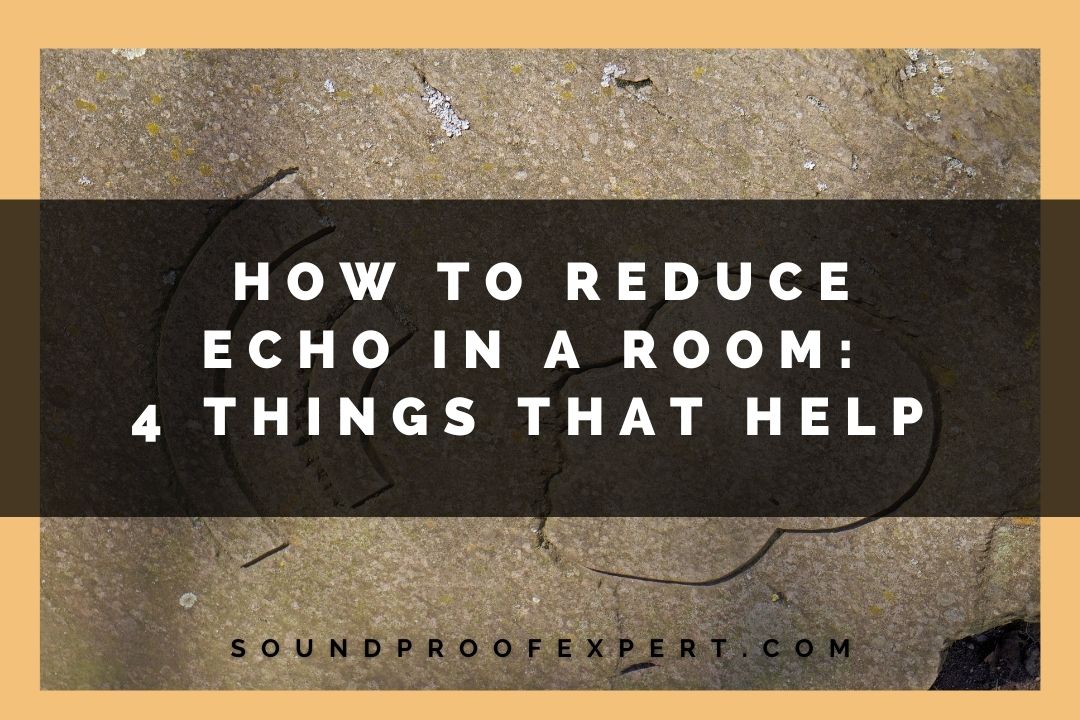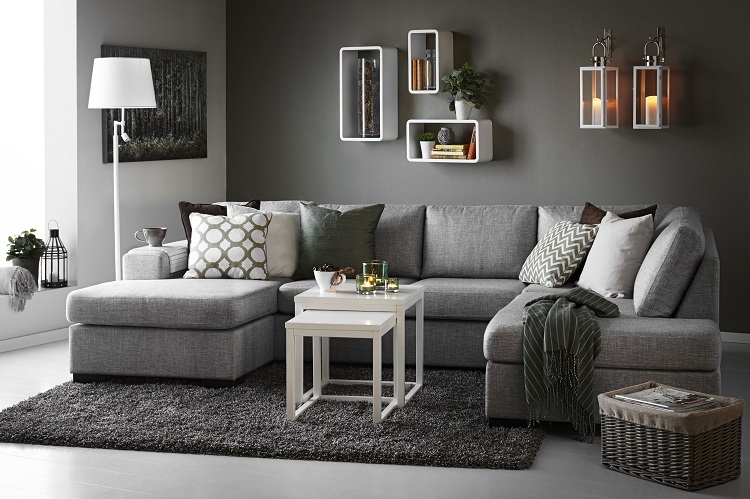
If you’ve ever been in a large, empty space before you might have noticed the sound of your voice bouncing back to you.
While this can be an interesting observation, it’s not a phenomenon you want happening when you’re trying to relax at home, and it can be distracting when you’re trying to watch a movie or have a conversation.
How do you reduce an echo in the room, then?
Echoes are most commonly experienced when sound waves hit large, flat surfaces, so trying to soften these is the best approach to reducing them in a room.
You can use a variety of methods like putting textures on the walls, hanging art, and laying rugs, otherwise, a more serious approach of acoustic sound panels may be required.
An echo doesn’t have to disturb the sound quality at home as long as you know some ways around it. Thankfully, we can teach you all about echoes, what makes the sound phenomenon more likely in a room, and what you can do to soften their effect at home.
What Is An Echo?
When sound is created, the sound wave travels through the air until it finds somewhere to land and something to stop it. When this sound hits a hard flat surface, it doesn’t stay put, instead of bouncing straight back, which creates the familiar echo sound.
The further the space in between the source of the sound and the thing that it’s bouncing off, the bigger the echo will be. This is why you notice a much larger echo in spaces like halls or standing in a mountain canyon, and on a smaller scale, you might hear it in particular rooms or areas of your home.
When there’s not a lot of space, the sound that comes back will be minimal and not noticeable because it’s being mixed with the original sound source.
Therefore, to reduce the space a soundwave has to travel in a room, you need to try and reduce this bounce back by being clever with how everything’s laid out.
Why Is A Room Echoing?
There’s a good chance you have a particular room at home more prone to creating echoes than others, and it’s likely a larger space with lots of flat surfaces.
As sound waves travel and hit these large, flat surfaces, they find it easier to bounce back rather than being absorbed.
The most common areas of a home that echo are hallways, bathrooms, and any large spaces with minimal furniture and textures because they usually have these large, flat surfaces.
An echo can be especially bothersome when you’re trying to watch a movie, listen to music, or just have a conversation, as you’ll notice the sound bouncing back and forward every time you make a noise.
How to Reduce Echo in a Room

Although an echoing room can be annoying, there are quite a few methods for getting rid of the sound phenomenon.
Consider these fixes to your home’s echo problem and achieve a better quality of sound in every room.
Solution #1: Rugs, Carpet, and Curtains
The simplest solution to reducing echo is to use these common household items to your advantage. Adding soft material, like that of a curtain or carpet, will help to break up these smooth flat surfaces and keep the sound from traveling too far.
You can make a huge impact on a room just by laying down an area rug and looking at softer window treatments like curtains and drapes.
These accessories can serve many purposes, including insulation, soundproofing, comfort, and style, so they’re not just good for getting rid of the echo in the room.
Solution #2: Hanging artwork
A good piece of art won’t just look nice in a room, but it’ll help reduce the echo in there as well. By breaking up the larger surfaces of a wall that are ideal for bouncing back sound waves, you’ll lessen the chance that sounds will be able to echo.
The key here is to choose a range of different materials and textures in your artwork. You’ll want a large canvas print, some wooden carvings, and a tapestry hanging on the wall. Not only will it add some much-needed personality to the room, but get rid of the echo, too.
Solution #3: Furniture Choices
The furniture in a room can have a better impact on sound when you use the right materials. There’s no need to throw out your existing pieces though, but simply get smarter about how they’re covered.
Make use of things like large, soft decorative pillows and throw blankets on the sofa and occasional chairs.
Consider using fabric over a leather sofa to soften it and protect it from damage. With these soft additions to the room, the sound will be better absorbed which will reduce the likelihood of echo in the area.
Solution #4: Acoustic Panels
Acoustic panels are the last line of defense against echoes and other sound issues, and they’re surprisingly easy to install.
These panels are made of sound-absorbent materials which adds a textured surface to the walls and helps the sound to stay put rather than moving back and forward.
Many people use these panels in their home theaters for this very purpose, and they also offer some soundproofing qualities.
They range in price, material, and design, so you don’t have to break your budget fixing an echo if you’re happy to settle for a more basic look, or you can go all out and get printed designs that match the décor of your home.
A Better Quality of Sound
With the echoes in your home minimized, you can get back to the things you love, like listening to music or watching the latest blockbuster
All it takes is a few simple adjustments and some smart texturing around the room, and you’ll have an echo-free living space and better quality of sound.
Related Questions
The layout of a room is essential to how sound is reflected and absorbed within it, and there are plenty of tricks and tips you can use to achieve the right balance.
To learn more about techniques used for improving sound quality at home, read on for some FAQs and our expert answers.
How Do I Reduce Street Noise in My Home?
To reduce the sound coming from traffic, passers-by, and road usage in your home, there are a few different methods to try.
Planting more trees to create a natural barrier in front of your house, ensuring all windows and doors are sealed and closed, or adding acoustic panels to the walls inside are popular methods that can get you some relief from street noise.
How Do I Stop My Bathroom From Echoing?
The bathroom is a common room in every home that echoes, and it can be resolved by reducing the number of large, flat surfaces that face each other in this space.
If you have two empty walls in the bathroom facing one another, you can add textures like towel racks, hanging plant pots, and cabinets on either of them to try and reduce the sound bouncing back and forth.
Resources
